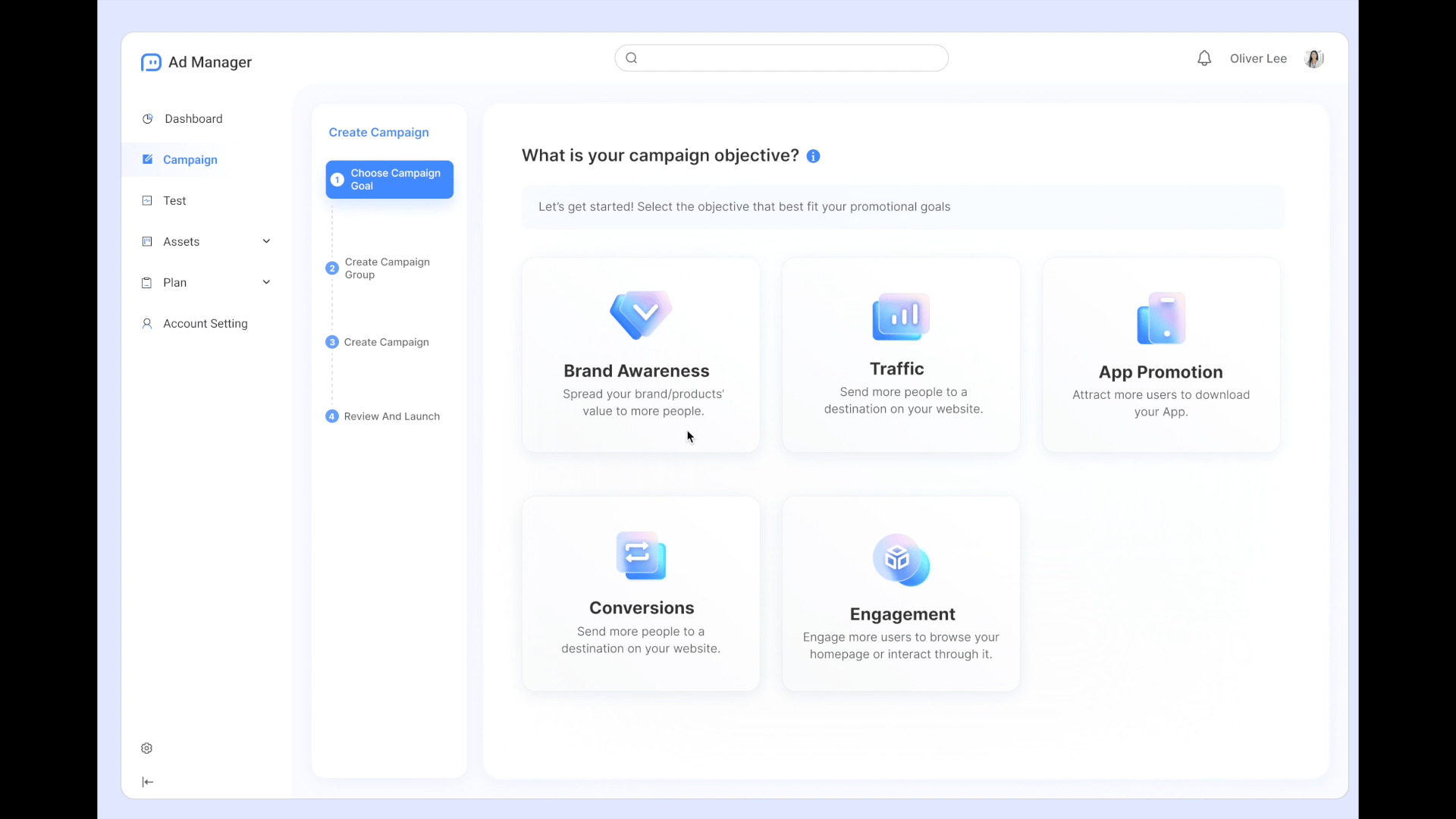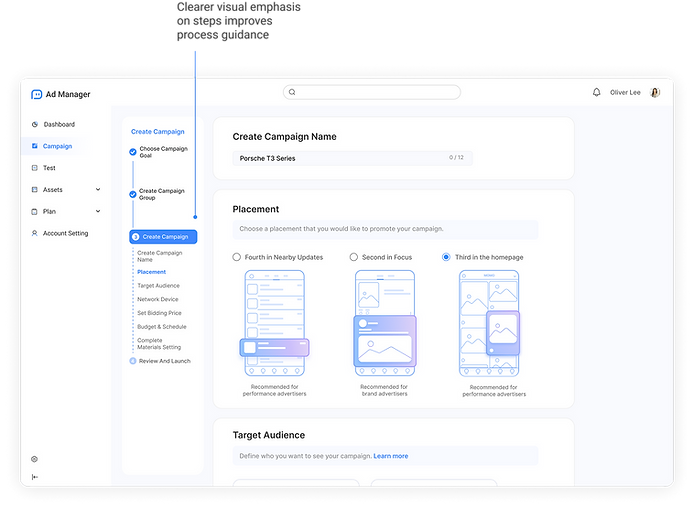
AI Ad Manger- Ads creation
AI Ad Manager is a redesigned AI-driven ads platform tailored for B2B use, aimed at streamlining the advertising process and maximizing performance for advertisers.
As part of the larger AI Ad Manager redesign, I led the Ads Creation subproject, owning the full design lifecycle — from user flow mapping and wireframing to high-fi and handoff to the eng team
Duration
3 months
My Role
UX Designer
UX Researcher
Team
1 Product Manager
2 Product Ops
5 Developers
The Problem
The complex ad creation process and unclear strategy guidance undermine user confidence
Advertisers need a simple and guided workflow to launch effective campaigns. However, user research revealed that the current process is complicated and lacks strategic support, leaving users uncertain about how to make the setup decisions—ultimately leading to hesitation and inefficiency.
Design Outcome

Understanding The Problem
To dive deeper, I conducted online interviews to pinpoint specific inefficiencies and user needs.

User Research Insights
After conducting the primary research, I analyze the data to identify common themes and insights.

Identify Design Opportunities
Based on the users' pain points I discovered from interviews, I transformed them into design opportunities.

Market Research
To improve the ad creation experience, I conducted extensive market research on platforms like Meta, LinkedIn, TikTok, and Pinterest. I analyzed how they structure their campaign setup flows—including visual hierarchy, user journey, and interaction feedback.
Across these platforms, I observed common design patterns: clear step-by-step flows, visually grouped information, and thoughtful interaction design that helps users stay oriented throughout the process. Some even leverage automation or smart features to reduce manual effort. These insights inspired me to design an experience that feels both guided and efficient—helping users complete tasks with greater ease and confidence.

Brainstorming & Feature Planing
After competitive analysis, I explored ideas from different angles. Then, I facilitated a workshop to deliberate on the priority features to be included in our project. The participants encompassed the PM and Devs. We collectively prioritized the features based on considerations.

New User Workflow
Following design decisions, I redesigned the workflow by splitting 3 steps into 4 to create clearer task boundaries. I added visual explanations, term definitions, and embedded AI tips (as shown in blue)—like performance forecasts and copywriting help—to guide users through setup with smarter, contextual support.

Key Design Iterations
During the design process, I ran multiple rounds of user testing and uncovered several usability issues. Below are a few key iterations that helped improve the overall experience:
1. Improving Process Visibility and User Orientation
From user research, I learned that the step-by-step flow didn’t really guide users. There wasn’t any clear feedback showing what was done or what was coming next. Users weren’t sure if they could go back and make changes, or how far along they were. so it felt more like filling forms than following a guided setup. Therefore, to boost the visibility for the entire process, I explored three style of the flow guidance, ensuring users have a clear expectation to the process.
Final design

Before




After
2. Improving AI Copywriting Efficiency
After conducting extensive market research and competitive analysis, we decided to introduce an AI assistant to help users generate high-quality ad copy—addressing a common pain point where many advertisers struggled to write compelling content efficiently.
However, user testing revealed that the chat-based interface was too slow for their workflow. With over 50 ads to create each day, they didn’t have time for back-and-forth interactions. To address this, I identified a few key functions users consistently relied on and redesigned the experience around them. By simplifying the flow and surfacing essential features directly in the interface, my goal was to reduce cognitive load and make the AI functionality more intuitive and accessible.


Before



After


Final Solution - Hi, welcome to the new ads creation experience

01. Streamlined Flow with Visual, Intuitive Inputs
The creation flow was redesigned into clear, guided steps. Each input is now more visual and intuitive, helping users complete tasks more efficiently and with greater confidence.




02. Smarter Planning with Forecasted Results
The AI forecast panel provides estimated impressions, clicks, and CTR based on your setup. This helps advertisers set realistic expectations and make better-informed decisions before launching a campaign.



03. Smarter Copywriting with AI Assistance
The built-in AI editor helps users improve writing, adjust tone, and fix grammar instantly. It speeds up content creation while ensuring professionalism and clarity.




Double Mode
Performance & Impact
The project’s still in development, so we don’t have final numbers yet—but the early signs are really encouraging. Beta NPS jumped by 26 points, and users had great things to say about the prototype.

Reflection
“Turning conversations into better design decisions”
Throughout the whole design process, I shared my design ideas and plans with developers. By conversing with developers and the project manager about user experience, timelines, plans, and other aspects of the projects, I could make the best design decisions with the best resources.





